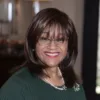Intentionality, community mindfulness and Blackness were the three major components Jameka Lewis, branch manager of the Blair-Caldwell African American Research Library, and her team considered during the building’s renovation.
Beyond the physical renovations like HVAC repair, adding accessibility components and design overhauling, the overall goal was to make the space intentionally Black history-centered with the surrounding community in mind.
From the colors to the historical photos on bookshelves to the books on display, the new Blair-Caldwell space is steeped in Black culture, and folks can see it for themselves at a grand reopening planned for this Saturday. Lewis said the programming starts at 10 a.m. at the Five Points branch located at 2401 Welton St.
“Once you were in this space, there was nothing that said this is a Black library,” said Lewis. “When I first met with the architect I said this renovation has to represent Blackness with intention and that’s what we really wanted to accomplish.”
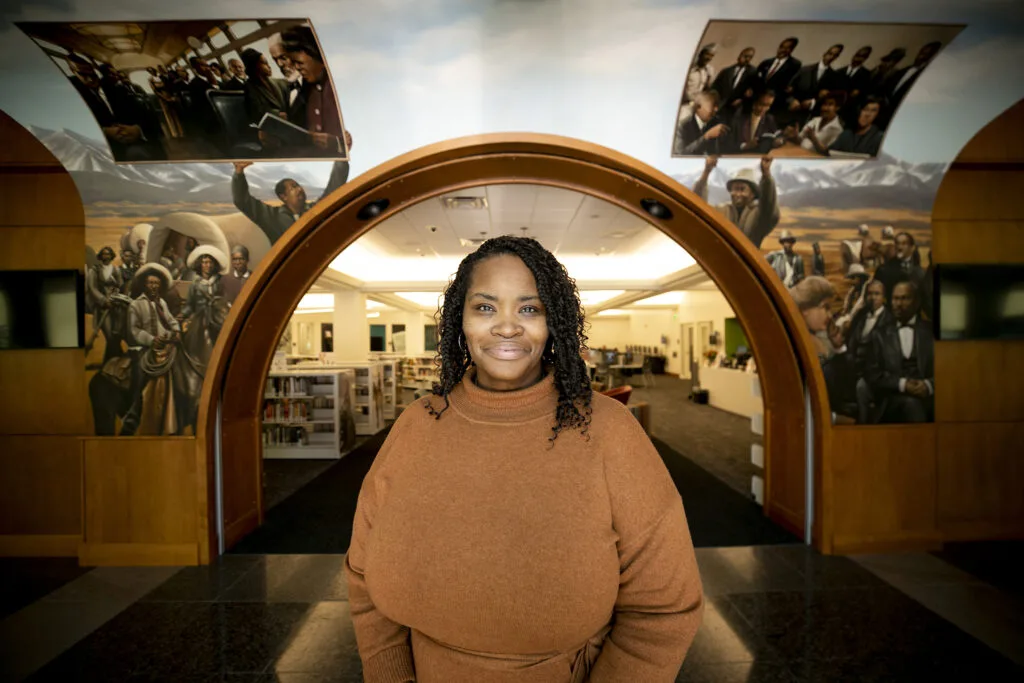
Blair-Caldwell opened in 2003 and is a nationally recognized public library that focuses on collecting and preserving African American history and culture.
It’s one of five research libraries attached to the public library system in the U.S. that focuses on Black history through collection archives.
But since its opening, the building had not received any type of physical or design update. In 2017, voters passed the Elevate Denver Bond that allocated about $2.8 million toward renovating the space. Recently, voters also passed Referred Question 2I, which slightly increased property taxes to add additional money to the Denver Public Library Fund.
With the 2I ordinance, Lewis said staffing has increased and new staff members are receiving higher pay. Pay raises for existing staff are on the way, she added. Through that funding the branch will also have extended hours. Some of that funding was also used toward the renovation.
Lewis said the whole first floor was transformed into an open space with added study rooms, a new teen space, lowered shelves and computer desks that are height adjustable.
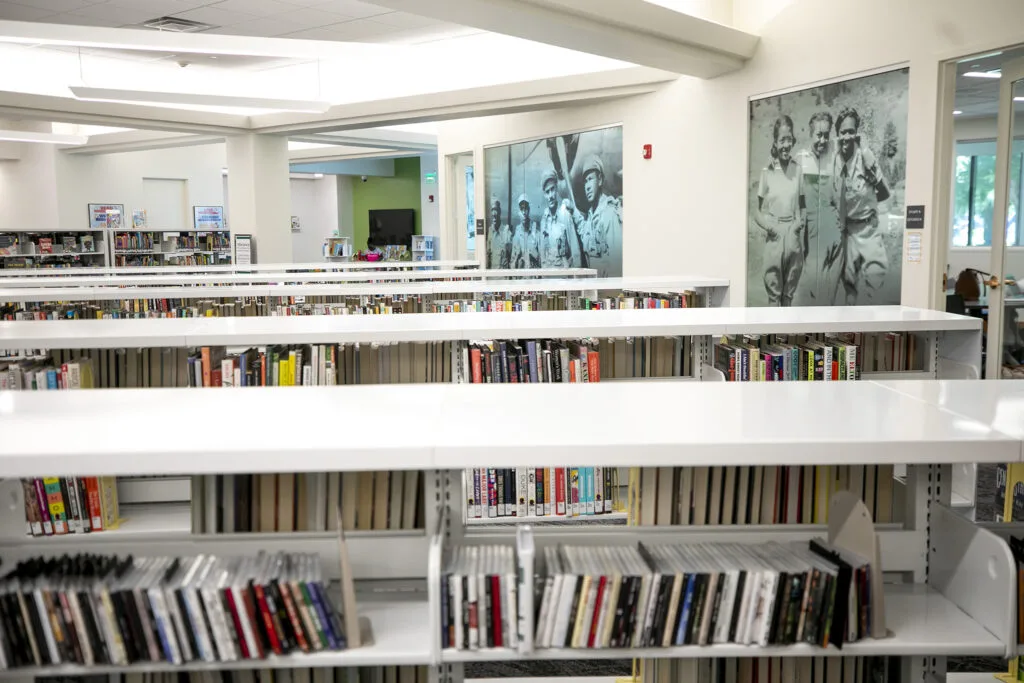
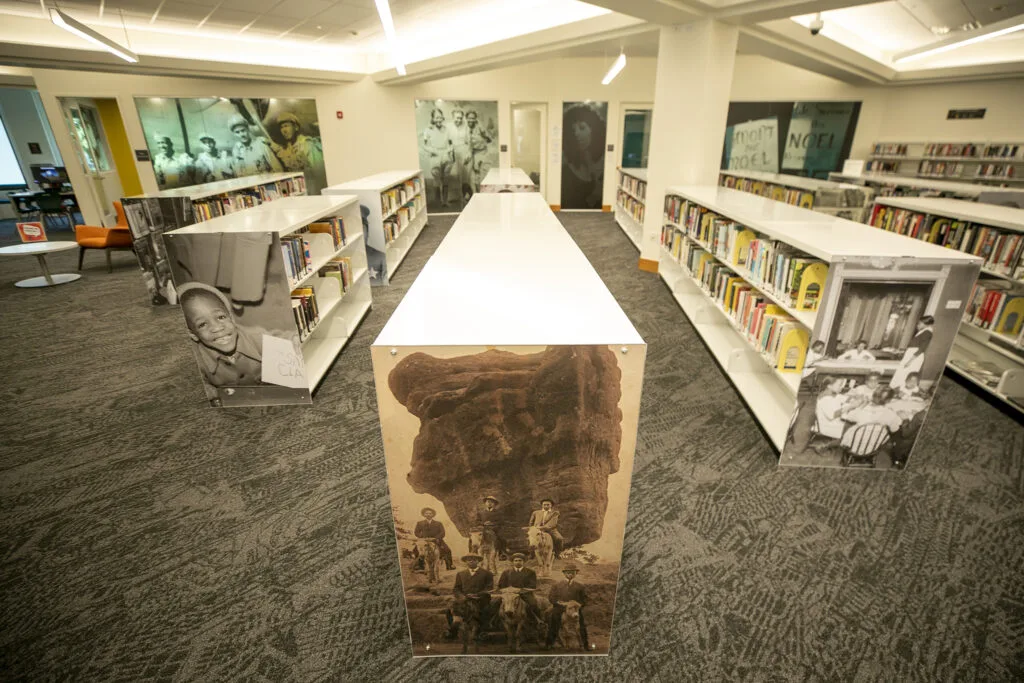
The old layout had the circulation desk sitting smack dab at the front entrance and Lewis said it was like a fortress. It felt intimidating and not inviting. Now, the desk is off to the side where folks can see the librarians if they need help.
A seating area with homey vibes that the librarians call the living room now sits where the old circulation desk used to. Touches of Black culture are seen in the space’s color scheme as well as the the nearest book choices.
Lewis said the colors throughout the space are a nod to the Pan-African Flag of red, green and black. The nearby bookshelf is a curated shelf of Black history books.
“Everything that is in our research room upstairs is Black history and culture stuff, but it does not circulate,” Lewis said. “You can’t check out any of those Black history books upstairs. I said we are not meeting an information need by having our Black history books behind our doors.”
So Lewis went through the collection of about 1,400 books and picked 600 to bring downstairs to add to the circulation shelves.
“This collection mirrors the collection upstairs. Customers can actually come in and sit and browse and check these books out,” Lewis said.
That’s just one way, Lewis said, the branch is focusing on Black history and Black authors.
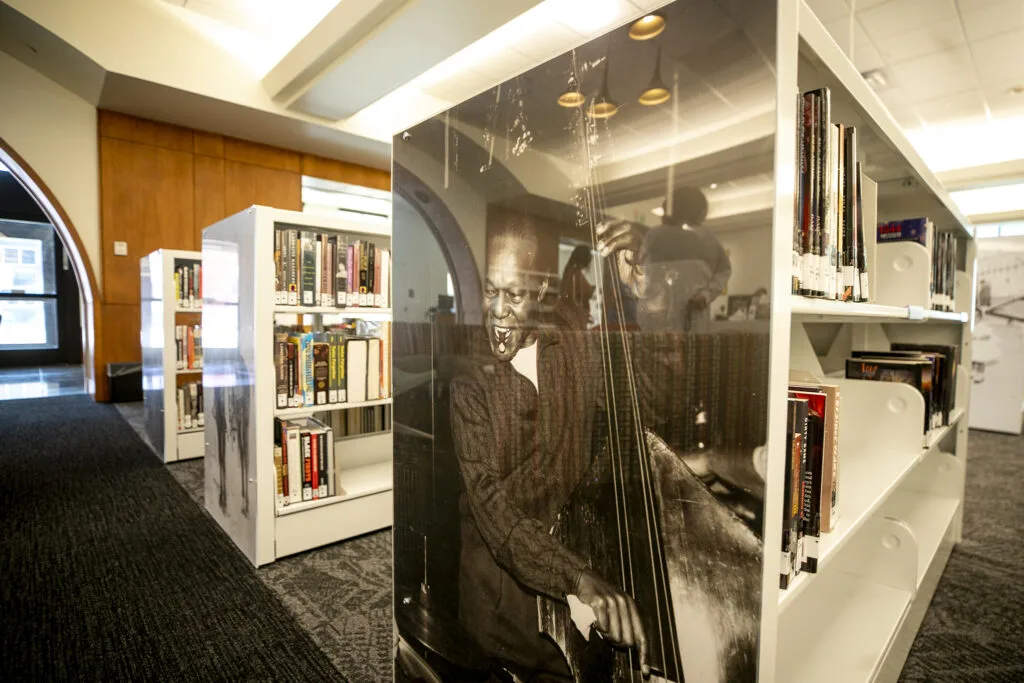
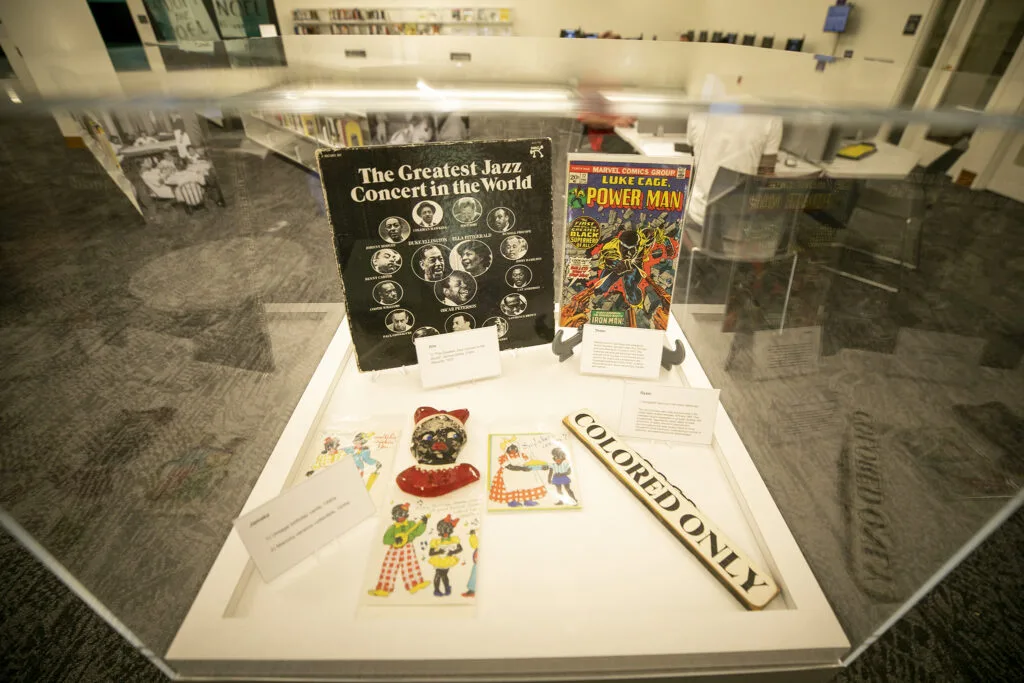
Along the walls and on the endcaps of every shelf are historical pictures of Black people from Five Points, Denver and Colorado. There’s a young photo of Charles Burrell, the first Black musician to join the Colorado Symphony, with his signature cigar and bass. There’s also photos of school kids and Black cowboys.
Display cases, spread throughout the first floor, will at some point be filled with 3-D archival pieces, but for now, they include collected memorabilia from staff members. Lewis collects racist memorabilia such as mammy figures.
“It’s an act of resistance absolutely because I feel like certain people shouldn’t have that,” Lewis said.
In the new teen space, there’s a room with a large TV and seating along with a collection of Black YA novelists, including books such as “The Hate U Give” by Angie Thomas and “Every Body Looking” by Candice Iloh. The room will have gaming systems and charging stations for interested teen library goers.
Lewis said the room will also be a creative space where teens can draw on the windows with glass markers and there will be a space for Black teen artists to display their work. Outside the room is another seating area next to the YA shelves that again displays more Black novelists’ work.
“It’s very intentional and very on purpose because a lot of these Black titles tend to not circulate as much as other ones and we wanted this to be a nod to the African-American collection,” Lewis said. “We’re the only branch in DPL that has a specific focus and that gives me some leverage to say this is our mission and we should be promoting these things. We look at data. We see that the Black-featured books and Black-focused material don’t circulate like others do.”
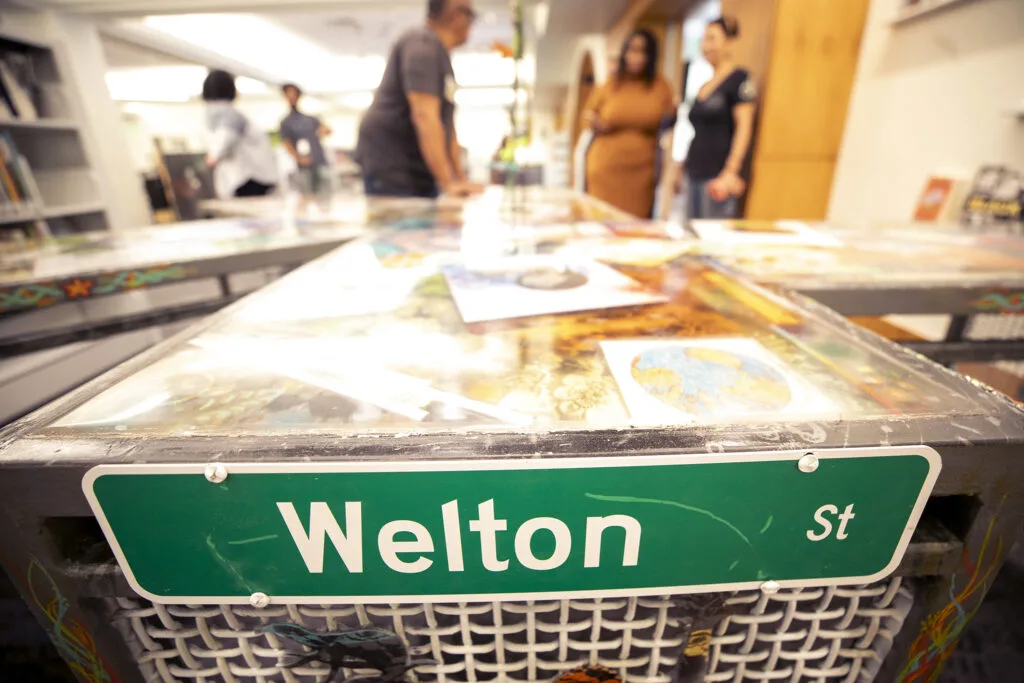
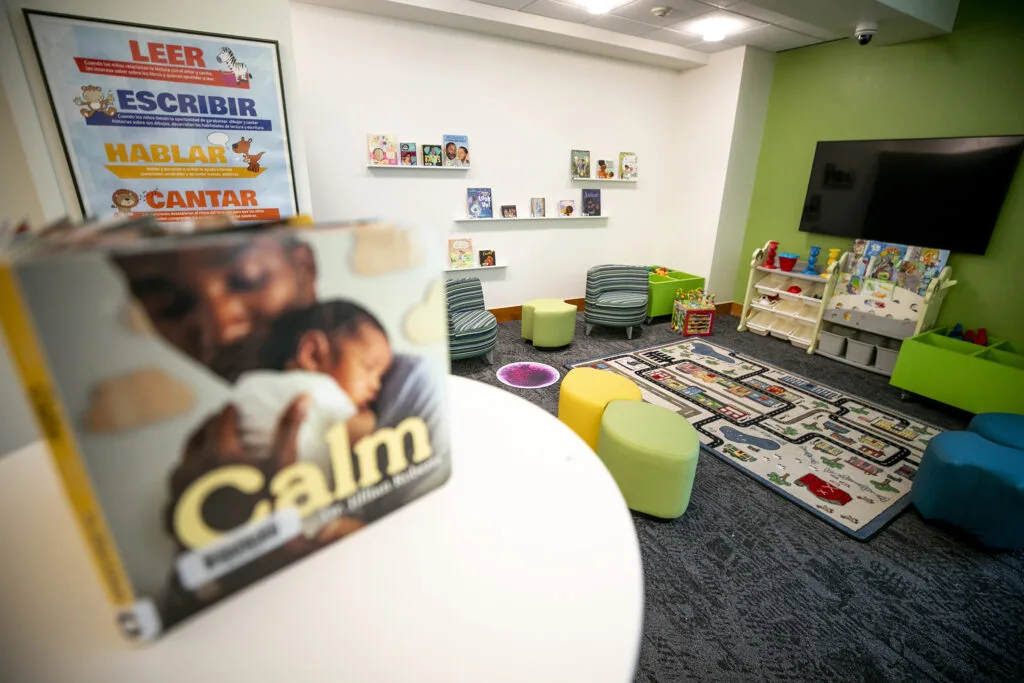
Intentionally displaying Black authors is the norm around the library, especially in the children’s section that is next door to the teen room.
Starting in September, Lewis said the branch will host weekly story times with librarians and guest speakers. All the books read there will feature Black characters.
“We do have this specialization, but we are still in a system. Any of system-wide program initiatives, we still do all of those. They’re just going to be Black,” Lewis said.
Next to the children’s section is an art piece from Denver artist Sam McNeil with Superior Iron Works Plus. The piece is a table in the shape of the Five Points intersection and the top of the table includes children’s book featuring Black characters.
The first floor wasn’t the only space to get an update. The second and third floors received new carpeting. The second floor historical archive featuring the community cases also got a face lift with the help of Dexter Nelson II, the museum and archives supervisor with the branch. The cases were reorganized to better show off the contents.
Lewis and Nelson said the updated space can be curated by locals and they encouraged folks to come to the museum and drop off anything they believe is a historical piece of Five Points, Denver or Colorado history.
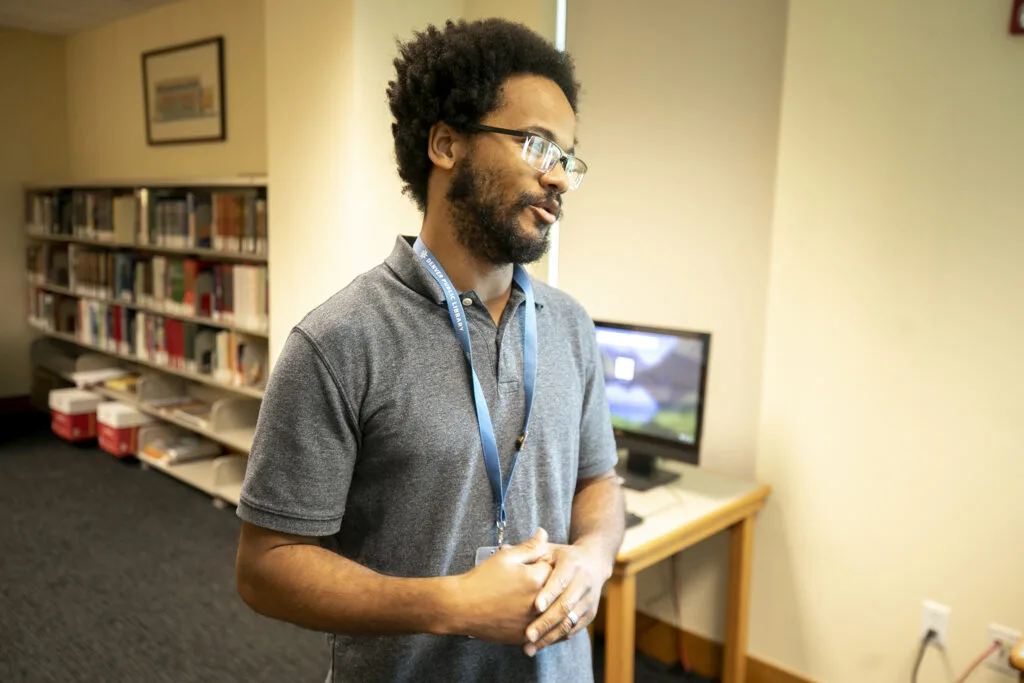
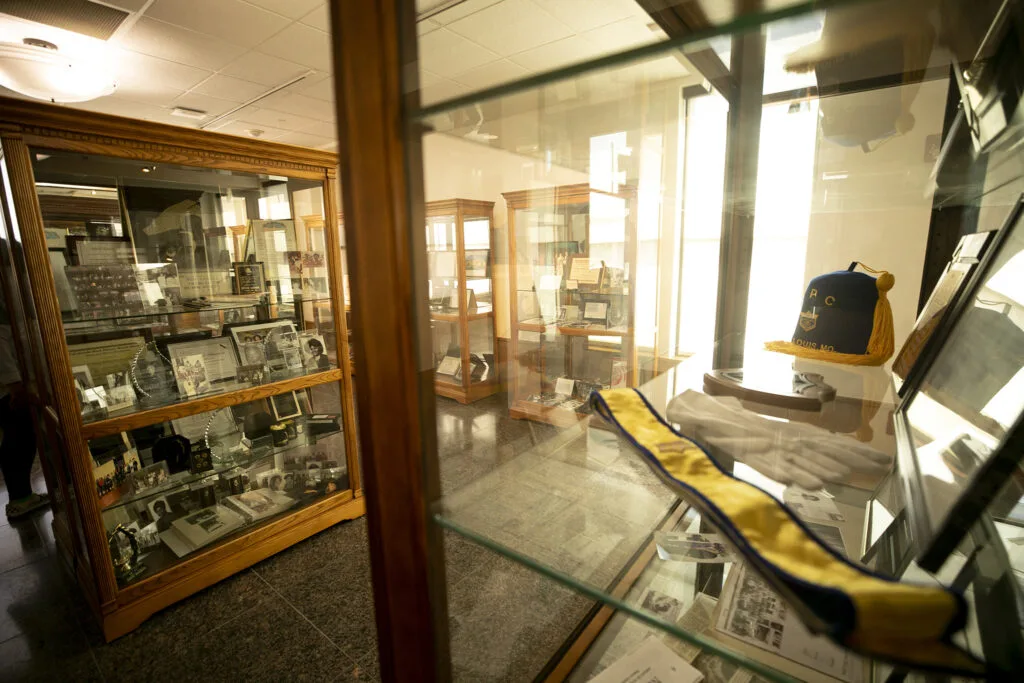
“We’re really big on community. We can tell you all about Leroy Smith or Charles Burrell but it’s way better to have them tell you,” Nelson said. “We really want to prioritize oral histories…We have these folks that have this amazing history and this amazing connection to these national stories that you might not know. These people are here in Denver, here in Colorado and they’re Black folks.”
Lewis said community is the driving force behind many of the changes and programming at Blair and that won’t change, even as the historically Black Five Points neighborhood experiences a change in racial demographics.
Blair-Caldwell was founded purposefully in a Black community, but with rising rent and gentrification, the neighborhood landscape has changed with shuttered businesses and fewer Black residents.
But that won’t deter the Blair-Caldwell staff from making the branch a focal point of Blackness.
“If you can name for me five other DPL locations where you can get Black programming, intentional Black programming, and highlighting the accomplishments of Black people throughout the year, then we’ll change,” Lewis said. “When the Webbs founded this place, they founded it with the intention of this always being a Black cultural center. A place where Black belonging and Black community can happen. That’s not changing. No matter who lives across the street. No matter who lives next door.”
Folks can stop by and experience that Black culture, history and more on Saturday at the reopening celebration and commemoration of the branch’s 20th anniversary. And also check out the new spaces.
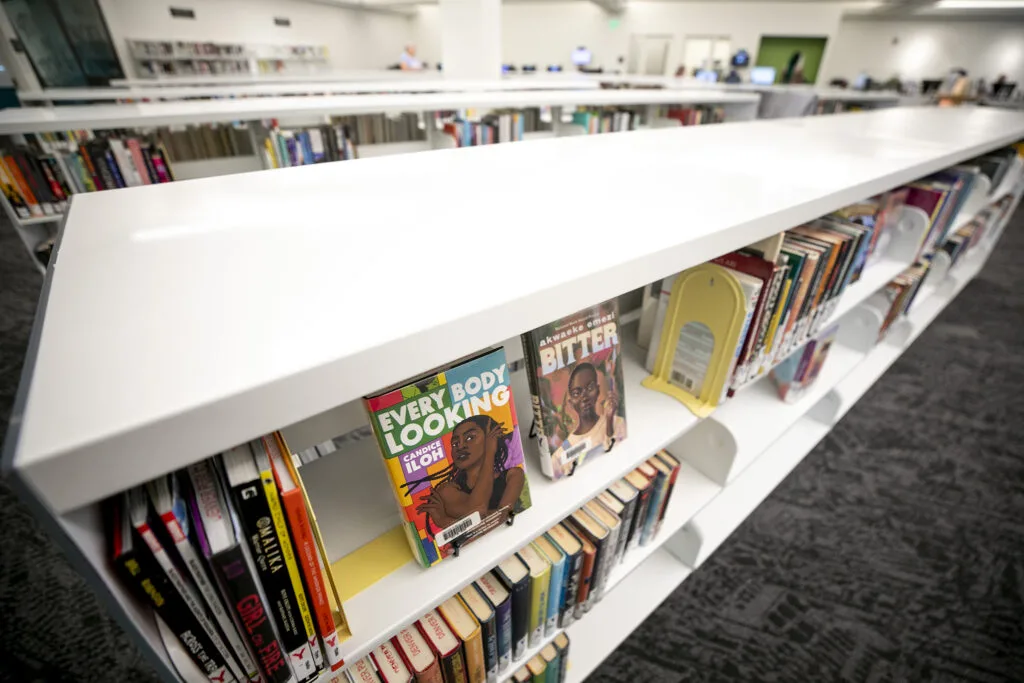
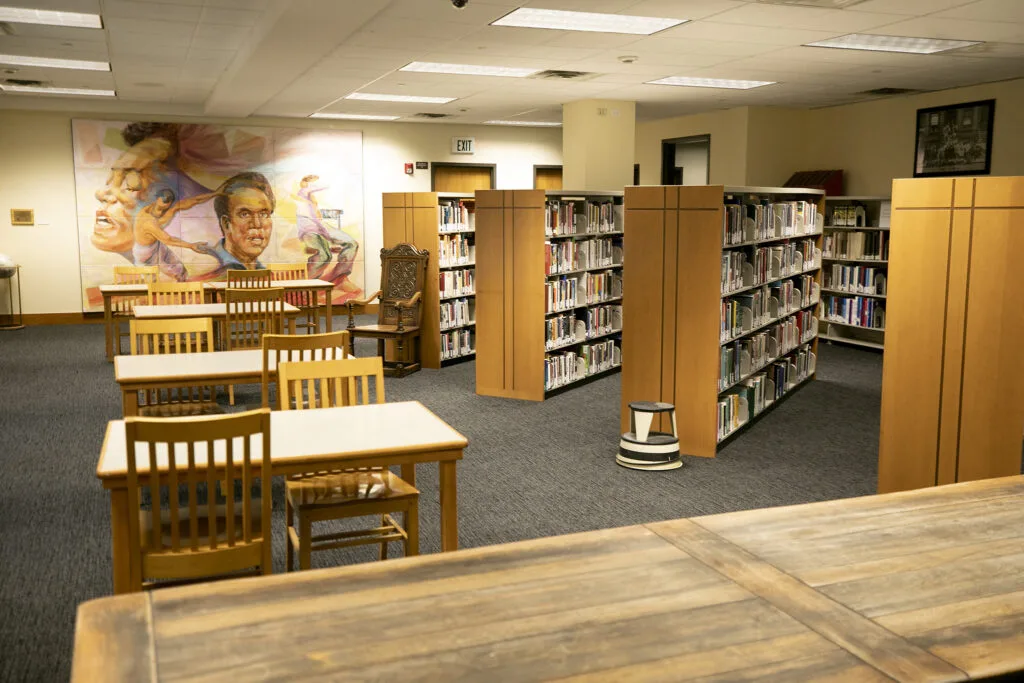
Community leaders Stewart Tucker Lundy, Adrian Miller and Kwon Atlas will host a story time. There’ll be some performances from jazz artists, spoken word poets and musician Kid Astronaut.
Lewis said Blair is entering a “new era.” She and Nelson agreed that the future of Blair-Caldwell will include more Black communities such as the LGBTQ community, various artists and podcasters. Any Black creative who would like to have their work displayed can reach out to the branch, Lewis and Nelson said.
The goal is to grow and continue intentionally providing a space for Blackness and a space to learn about Blackness.
“Blair is really a lighthouse,” Nelson said.
Lewis added, “Everyone is welcome. We want everyone to come in and get this history. We want everyone to come in and get this information because Black history, learning about it, is not just for Black people. Anyone can come in here and see themselves represented whether it’s on the walls or whether it’s amongst my staff.”
What: Blair-Caldwell African American Research Library Reopening Celebration
When: Aug. 12 at 10 a.m.
Where: 2401 Welton St.


